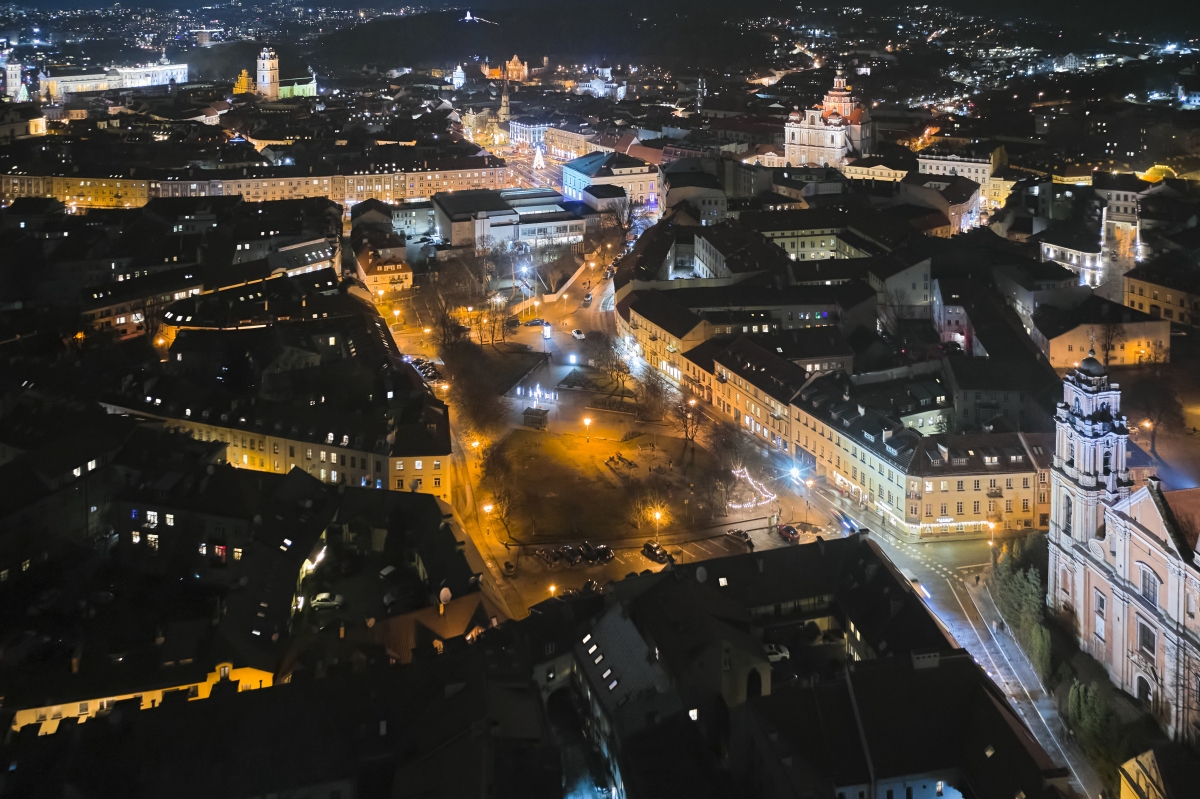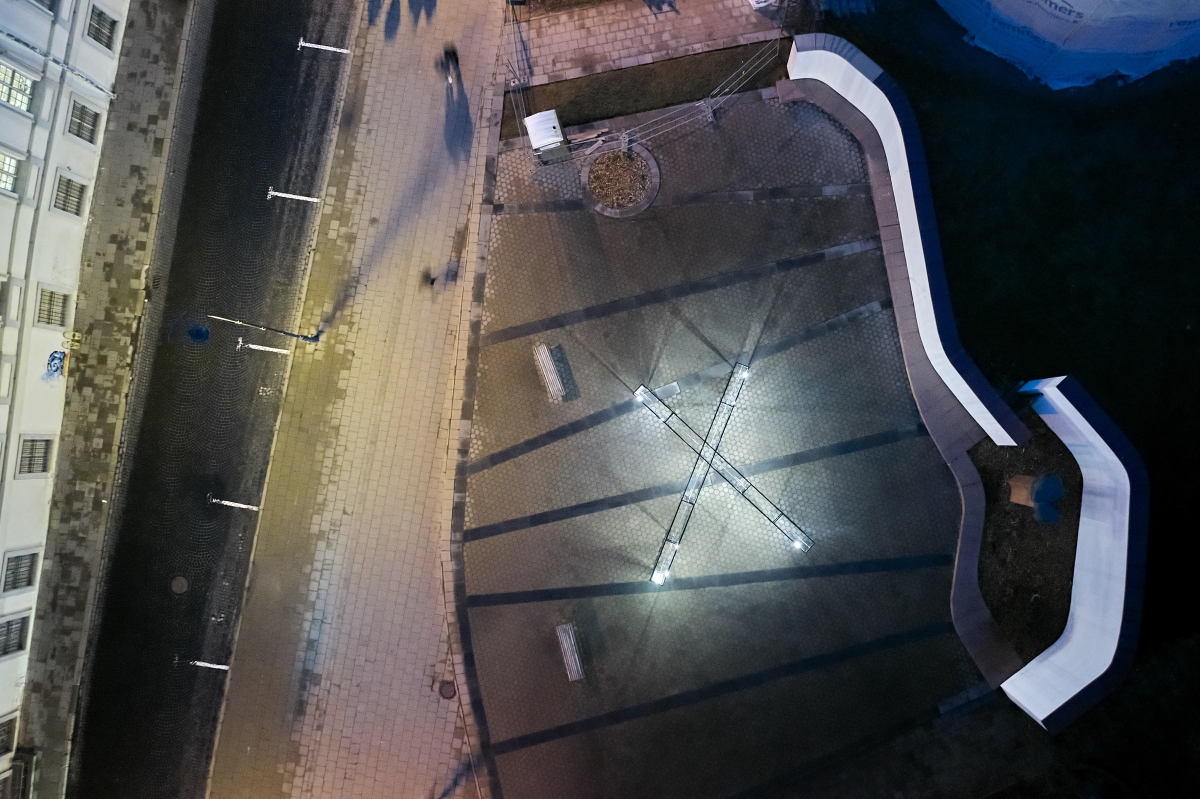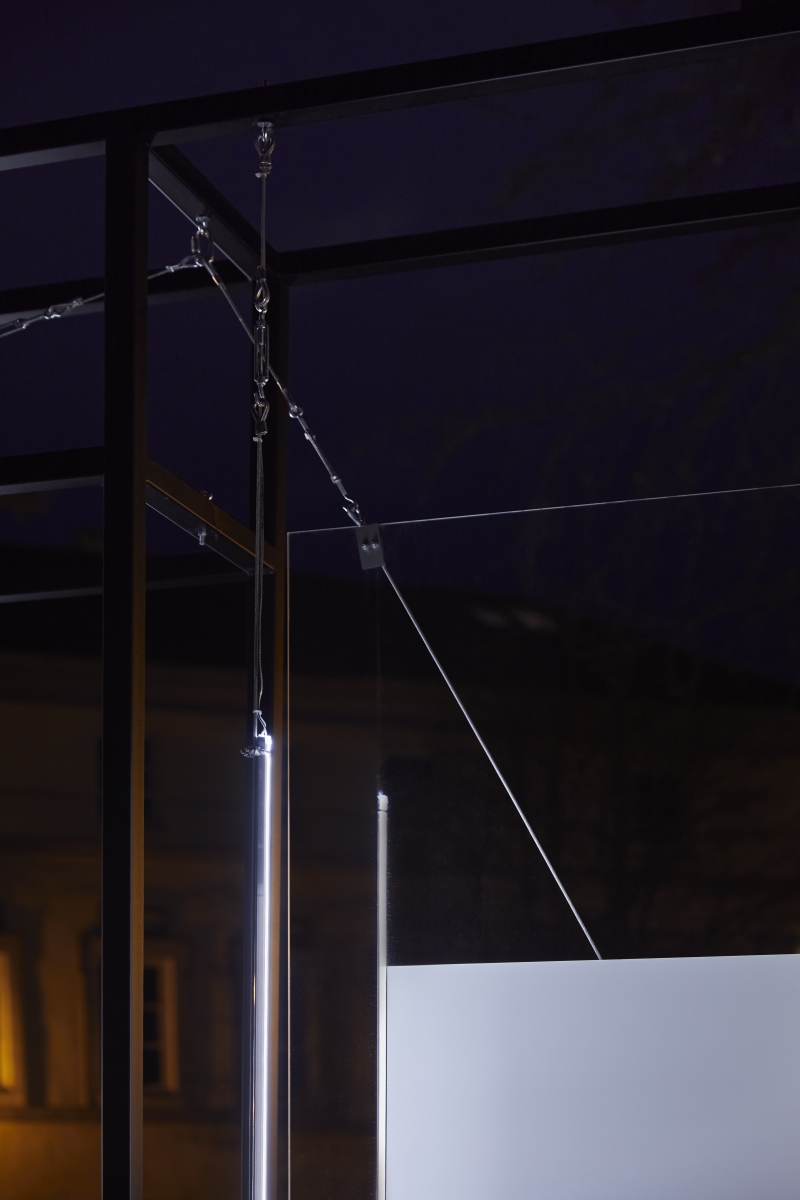During the lockdown in spring, Vilnius, the capital of Lithuania, was famous for being one big open-air café. When the second wave of the pandemic hit Lithuania, the squares of Vilnius hosted an open-air exhibition Homo Absentia (The Person is Missing / Absent) organized by the Lewben Art Foundation together with partners – Lithuanian Photographers Association and Vilnius City Municipality.
The exhibition Homo absentia presents artwork by young Lithuanian photographers, Visvaldas Morkevičius, Geistė Kinčinaitytė, Indrė Urbonaitė, Paulius Petraitis and Imantas Selenis, and creates a unique opportunity for the residents of the Old Town of Vilnius to change their routes and to visit the open air exhibition while out for their exercise or walking their pet.
In these extremely difficult times, art helps to improve our psychological well-being, and the artwork by this group of young Lithuanian photographers also contributes to this. The exhibition examines how the global pandemic has affected and will still affect, in one way or another, human relationships. Homo absentia raises the question of what the collections of closed or unvisited museums, the appropriated territories of Mars and the uncomfortably cold empty cities of the world are worth. Don’t people walking down the streets in masks remind us of detained citizens hiding their identities and waiting for their interrogation at a remand centre to begin? Can we scan our memory, digitise the experience of our life journey and virtualise human relationships? It is possible to ask these questions, however, we may not be able to answer them for sure.
Exhibition inspired by the global pandemic
‘We started planning the exhibition in the spring of this year, after the global pandemic was announced, museums were closed and cultural entertainment opportunities continued shrinking. This is how the idea of creating a map in the Old Town of Vilnius was born – a map that is safe, full of culture and reflections on the events that are important to us all today. This is an exhibition about human relationships and connections that were lost or changed due to the lockdown, the importance of which is undeniable even in the face of a pandemic,’ says Ugnė Bužinskaitė, director of the Lewben Art Foundation.
According to the curator of the exhibition, Gintaras Česonis, Homo absentia was inspired by the photographic works accrued in the collection of the Lewben Art Foundation: ‘Some of them are also presented in this exhibition. However, the exhibition is not limited to artwork that is part of the foundation’s collection, the viewers will also enjoy works that were lent for the purpose by the artists themselves.’
According to Ms Bužinskaitė, the exhibition was a present to the city and was intended to both decorate the city and delight the residents of the Old Town with contemporary art as they walked around the city at a time when museums, theatres and concert halls were closed.
‘We debated for a long time whether opening such an exhibition during the strict lockdown was the right thing to do. But art is also a way to escape psychological tension. Therefore, if there is an opportunity to offer people a way to reduce their stress by visiting an outdoor exhibition while at the same time strictly observing the safety requirements, such an opportunity should be offered,’ says Vilius Kavaliauskas, chairman of the Board of Lewben.
Ms Bužinskaitė also noted that some western European countries closed all non-food stores for the period of the strict lockdown but left the bookstores open because books are an essential basic commodity: ‘And we offer a free exhibition of Lithuanian photographers, which will stay open to the public even when the lockdown is over.’
Empty city without people as both a reality and a theme of the exhibition
Like the exhibition itself, many of the works were inspired by insights embodied long before the onset of the forced isolation or the losses documented by the artists. The works by young Lithuanian photographers Morkevičius, Kinčinaitytė, Urbonaitė, Petraitis and Selenis enquire into how things change when people are isolated, public spaces are de-humanised, human relationships are isolated and broken, and transferred them to a virtual space.
‘Large Lithuanian cities have been feeling the need for public art spaces for quite some time now. In the current context, this has taken on an even greater meaning. I am delighted with the initiative shown, the high-quality, universal and modern solutions. I hope that the new constructions which have been specially adapted for the exhibitions will serve the residents of the city for many years to come, will migrate around the city and country and inspire new initiatives and sustainable solutions,’ adds Gintaras Česonis.
According to Aurimas Syrusas, an architect of the studio IMPLMNT architects, the urban solution responds to the curatorial idea of the exhibition, which speaks about connections and relationships: ‘Just as our physical connections are currently being disrupted, so is the exhibition divided into separate segments located in various public spaces around the city. However, all the segments are connected through an imaginary link as the plies of the structures react to the layout of the next segment of the exhibition, thus creating conditional dialogues and references.’
In addition, Syrusas adds, the architectural expression of the expositions is also a consequence of the theme of the exhibition. Both the structures as such that invade the trajectories of pedestrian paths and their aesthetics, including the emotion created by their material expression, reinforce the feeling of connectedness.
Photography: Norbert Tukaj
















































